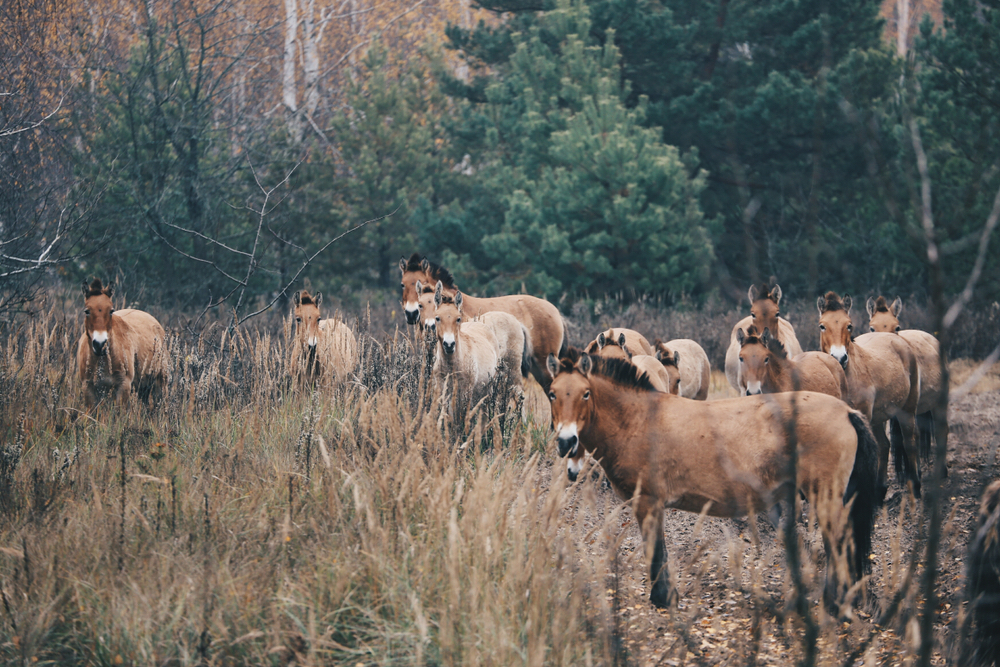Chernobyl Ironically Becomes a Remarkable Ukrainian Nature Reserve
The radioactive skies of Chernobyl may not be habitable to humans anymore, but they are to the wildlife that has taken over the area.
Ukrainian authorities say the area may not be fit for humans for another 24,000 years.
— Euronews Green (@euronewsgreen) May 9, 2021
But, among the Chernobyl exclusion zone, endangered animals are thriving, including the stunning Przewalski’s horses. pic.twitter.com/2XLimrdVMO
The nuclear disaster that occurred in Chernobyl is considered the worst anthropogenic disaster in all of history. When an explosion exposed the core of nuclear reactor number four, it caused radioactive material to leak into the environment. The death toll of this event is incredibly vague and uncertain; however, the BBC reports only 31 people were killed as an immediate result of the explosion. The UN estimates that 50 deaths can be directly linked to the disaster and that in 2005 a predicted 4,000 deaths can be linked to Chernobyl. However, these estimates are speculation because no one knows the extent of the detrimental emissions exhumed into the inhabitant’s bodies.
35 years after the world’s worst nuclear accident, #Chernobyl has become a haven for wildlife.
— Pattrn (@pattrn) May 7, 2021
Meet the man who lives and works at the town’s animal sanctuary. pic.twitter.com/vSg6QtxFZm
It’s truly remarkable that someplace that once only brought death and hardship is now bringing purpose and life back to various endangered species. For example, the Przewalski horse was considered the last breed of wild horses and drastically decreased in population, rendering them almost extinct in the wild. However, thanks to the captive breeding and steadily growing population in Chernobyl, the Przewalski horse is thriving along with other endangered species such as the Eurasian lynx, brown bears, European bison, and many other species.
They’re thriving because there’s no humans to kill them, once again proving we’re the problem.
— K (@NockFourSix) May 10, 2021
According to a user on Twitter, “They’re thriving because there are no humans to kill them, once again proving we’re the problem.” You can’t really disagree with this statement considering the Chernobyl disaster resulted from accidental destruction from human negligence.
However, what’s going on in the Chernobyl Exclusion Zone from an ecological and biodiversity perspective is absolutely fascinating. It is also a continually evolving and changing situation that seems to only account for positives.

Glitter Magazine Writer | Tweet me @gabbigabehart





